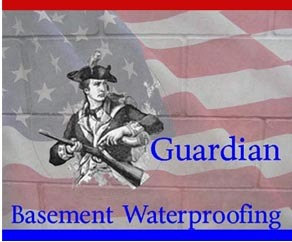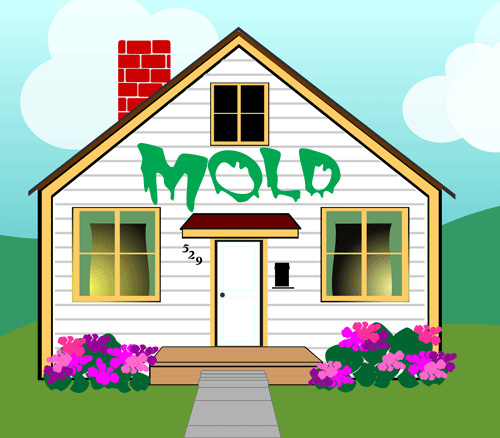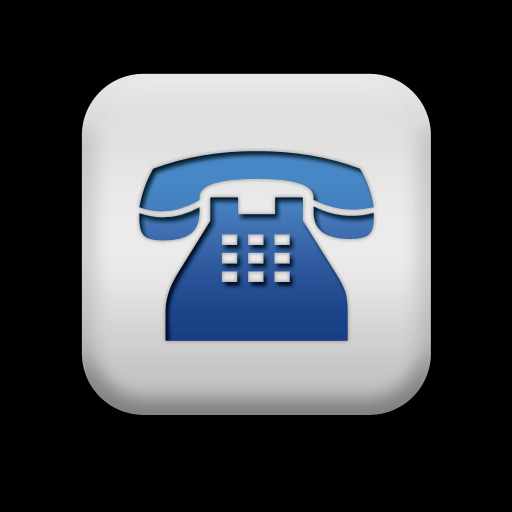


|
|
|
||||||||||||||||||
|
 |
||||||||||||||||||
|
|
|||||||||||||||||||
 Mold and Your Home Mold and Your HomeWhat is mold? Well over 100,000 different types of mold world wide. Mold is found almost everywhere. mold isn't a plant or animal, it's microscopic organisms, they produce enzymes that digest organic matter and they produce spores to reproduce. These microscopic organisms are part of the fungi family, like yeast, mushrooms, and mildews. Outside of your home mold is very useful for the decay of trees, plants etc. Mold will flourish in a warm, humid environment, but you will still find mold any time of the year in any environment in your home or outside. Outside you will find mold in damp shade. any damp area, in rotting leaves or plants. Inside your home the basement, bathroom any high humidity areas. People use the terms mold or mildew to describe what is growing on their fabrics, tile, or floor joists. How does mold grow in my home? When mold spores enter your home, they must have moisture of some type to start to grow and start digesting the things they are growing on. Mold can grow on dry wall, wood, paint, tiles,carpet, insulation even inside the blocks of your foundation. What happens is extra moisture or water that is in your home from high humidity or a wet basement it creates the right environment for molds. If the Humidity and or moisture isn't removed then your going to grow mold. You can not get rid of all molds or mold spores in your home, but you can get rid of the source of mold growth. Control the moisture and you will control the mold. How does mold enter my home and get to me? Mold enters the air when moved or disturbed, then the spores are air born. You breathe in the spores, or you pick up something that's moldy and are exposed to the mold and spores through your skin. You can eat the mold in food around the house, or from your hand touching your mouth. There are many ways to be exposed to molds and spores. How do I find out if I have in your home? Look for whitish thread growths or a group of tiny black spots on your wet or damp basement walls, bathroom or any place in your home with high humidity. Any time you smell a musty odors you have mold. Again, if you see or smell mold, you have mold growing and out of control. Warning, you cannot always rely on sight or smell to locate mold in your home. Mold can be growing inside your basement block walls, a sump pump crock, or behind any walls, ceilings, under or in a refrigerator, duct-work. How can I control mold from growing in my home? How to fix the moisture or water problems in your home: You want to stopping water from entering your home is your first priority. Fix any roof leaks, plumbing pipes or fixtures. Stop water from coming near your basement walls. Look at gutters, down spouts, grading, window wells. Good air circulation is a must inside your home, even more so in your basement and with the inside of exterior walls, also ventilate areas with outside fresh air. Air exchange units like Nu Air or other brands work for fresh air also it provides warm air to all areas of your home. You will want to move any objects away from the inside of the exterior walls, two or three inches will do, this will give you good air circulation. You need a exhaust fan in your bathrooms, laundry room or kitchens. Ventilation and insulation is needed in the attic, basement or crawl space, use a Air exchange units like Nu Air or other brands. A dirt floor crawl space needs a heavy gauge plastic vapor barrier over dirt and up the side walls. You need to clean and dry any water damage to your home such as carpeting, upholstered furniture or beds within 24 to 48 hours or think about removing any damaged furnishings. Clean your home and vacuum carpets and rugs on a regular schedule. How can I clean up the mold in my home? Warning, the most dangerous time for exposure to mold is when your cleaning up mold. Your stirring up mold spores this will expose you health problems from mold. During cleaning of mold is when you need to be very careful how your cleaning. First of all is the mold area small and well defined? If so then you can do the cleaning, as long as your healthy and don't have signs of allergies. If the mold is in large areas or hard to reach areas such as inside your basement walls, or upstairs walls or under the floor, you should then use a professional for anything is extensive. Larger Areas: 1.Warning: It's best to use a professional to clean the area. For basements call a professional " Basement Waterproofer" or look for "Fire and Water Damage Restoration" online or in the yellow pages or use the BBB. However if you want to do the cleaning yourself then follow the advice below. 2. Always use goggles, respirator or dust mask and gloves to protect yourself when working in the mold area. For a compact mass of mold growth use a OSHA (Occupational Safety & Health Administration) approved particle mask. 3. To prevent the spread of mold, seal the room area. Seal any heat or cooling ducts. Open any windows or doors to the outside before you begin to clean up. 4. Remove any furnishings to a area to be cleaned . See cleaning instructions below 5. Place any moldy articles that you want to throw away in sealed trash bags. 6. Use a scrub brush to clean hard surfaces: Use a mild laundry detergent with warm water. Next 1/4 cup bleach mixed in one quart of water. wait 30 minutes. The last step is to apply borax detergent but don't rinse it off. Borax also kills mold and inhibits mold growth. Borax also kills germs and bacteria. It is a disinfectant, biocide, insecticide, pesticide, herbicide and fungicide. However, mixing borax with bleach is not recommended because of dangerous gases when mixed. Borax is great for killing mold. Unlike bleach, borax is chemical- free with no dangerous gases. You can find it in the laundry section of supermarkets. How to Kill Mold With Borax. You can either buy a borax based cleaner to kill and remove mold, or you can mix borax powder in water, following these directions. Borax can irritate sensitive skin and can be toxic if ingested. So you can wear rubber gloves if you want to be cautious. Mix borax with water. Use a ratio of one cup of borax with one gallon of water. Make sure the borax fully dissolves in the water. Hot water will dissolve borax powder faster. You can pour the solution into a spray bottle, if you want to apply it by spraying. Next, apply the borax and water solution to the moldy area. Let it sit for a few minutes. You can then use a scrubbing brush, cloth, etc to wipe the mold away. You do not have to rinse afterwards. The borax will prevent the mold returning. If you want, you can make a paste instead. Add less water to the borax powder to make a paste. To apply the paste, smear it on the moldy area. 7. Clean the whole area very well. Wash any clothing, covers, drapery, vacuum floors. Smaller Areas: 1. Use goggles, gloves, regular cotton dust mask would be fine. 2. To prevent the spread of mold, seal the room area. Seal any heat or cooling ducts. Open any windows or doors to the outside before you begin to clean up. 3. Place any moldy articles that you want to throw away in sealed trash bags. 4. Use a scrub brush to clean hard surfaces: Use a mild laundry detergent with warm water. Next 1/4 cup bleach mixed in one quart of water. wait 30 minutes. The last step is to apply borax detergent but don't rinse it off. Borax also kills mold and inhibits mold growth. Borax also kills germs and bacteria. It is a disinfectant, biocide, insecticide, pesticide, herbicide and fungicide. However, mixing borax with bleach is not recommended because of dangerous gases when mixed. Borax is great for killing mold. Unlike bleach, borax is chemical- free with no dangerous gases. You can find it in the laundry section of supermarkets. How to Kill Mold With Borax. You can either buy a borax based cleaner to kill and remove mold, or you can mix borax powder in water, following these directions. Borax can irritate sensitive skin and can be toxic if ingested. So you can wear rubber gloves if you want to be cautious. Mix borax with water. Use a ratio of one cup of borax with one gallon of water. Make sure the borax fully dissolves in the water. Hot water will dissolve borax powder faster. You can pour the solution into a spray bottle, if you want to apply it by spraying. Next, apply the borax and water solution to the moldy area. Let it sit for a few minutes. You can then use a scrubbing brush, cloth, etc to wipe the mold away. You do not have to rinse afterwards. The borax will prevent the mold returning. If you want, you can make a paste instead. Add less water to the borax powder to make a paste. To apply the paste, smear it on the moldy area. 5. Clean the whole area very well. Wash any clothing, covers, drapery, vacuum floors. How to clean your furnishings Any clothing or washable Items, use your washer. Wood, glass, metal, plastic or tile. Use 1 cup of bleach to 1 quart of water. Warning: bleach can fade colors, best to test a small area before use. If no color fades then wipe down your things. Non washable things like bed mattress and furniture, if moldy you should think about throwing it away and buying new. If you want to keep it then do the cleaning outside of your home. Vacuum it very well and let it air out as long as possible. If you don't smell any odors it most likely is ok. But keep a watch out for any new mold growth or family health problems. How can I have less exposure to house mold? Outside of your home: If your a person that is sensitive to mold then try to keep away from mowing or cut grass, woods, or really any outdoor area that may have concentrated mold. Inside the home you can control the mold growing by controlling the humidity between 40% to 55% also ventilating bathrooms and kitchen. If you mold growing mold in your home, steps would be, clean up mold and fix leaks, control humidity. Clean hard surfaces to lessen the allergic reactions. Use mold killing products, soap and water. You can also use a bleach mixture of (1 cup bleach to 1 gallon water. Summarized Recommendations: Humidity in home between 40% to 50%. Run air conditioner or use a dehumidifier during humid months. Use air exchange unit like Nu Air the Eliminator to insure good ventilation, use exhaust fans in bathroom and kitchen. Always use a mold inhibitor to paint before painting. Regularly clean kitchen and bathroom with mold type killing products. Do not carpet bathrooms kitchens and basements. ( note: basements can be carpeted if proper rigid Styrofoam thermal barrier is install on floor and wall. With proper humidity and ventilation control is used). Remove wet carpet and anything upholstered. Sources: Washington State Department of Health, National Center for Environmental Health, Centers for Disease Control & Prevention, U.S. Department of Housing and Urban Development |
|
|
|
|
| Site Map |

